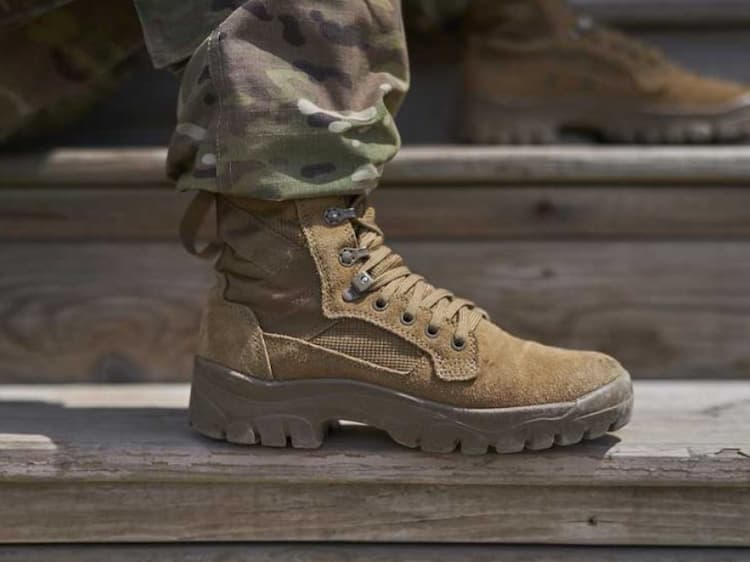For too long, tactical boots have been designed with men as the focus, and women have either had to cram themselves into boots that are too large or settle for lower-quality alternatives. However, the market today for women’s military boots has sharpened its competitive edge.
Regardless of whether you are military personnel, law enforcement, a security professional, or just a civilian who enjoys rugged and stylish tactical boots, good combat boots do matter. These boots will be on your feet all day long, oftentimes under some of the most taxing conditions, so getting the right pair matters more than you might think.
What Makes Combat Boots Different?

source: instagram.com/military_shop_aus
Combat-style boots are not just rugged hiking boots sporting a military look. They’re built to perform in extreme conditions while providing the support and protection necessary for tactical missions. These boots tend to be heavier constructions than your regular footwear, complete with reinforced toe caps, puncture-resistant soles, and materials that will function in everything from desert heat to arctic cold.
For women, the difference is more than just scaling down men’s boots. Women’s feet are proportioned differently – generally narrower heels, more spacious forefoot areas, and different arch structures. Quality womens combat boots account for these anatomical differences, resulting in better fit, comfort, and performance.
Key Features That Matter
When you’re considering women’s combat boots, there are some features that you shouldn’t settle for. First on the list is the quality of construction. Boots with reinforced stitching, especially around high-tension areas such as the toe and heel, are a good starting point. The upper material needs to be robust – full-grain leather is the gold standard, but modern synthetic materials can provide great performance with reduced weight.
The sole is where things get technical. A good combat boot needs aggressive tread patterns for traction on various surfaces, from loose gravel to slick concrete. The midsole needs to have adequate cushioning and support, and the outsole needs to be oil- and slip-resistant. Most tactical combat boots now also feature special compounds that enable them to stay flexible in extreme temperatures.
Ankle support is also crucial. Combat boots usually extend 6-8 inches above the ankle, providing protection and stability. The collar needs to be padded enough to prevent chafing but not so much that it restricts movement.
Breathability seems counterintuitive to the purpose of a protective boot, but moisture management is crucial for foot health during long-term wear. Boots with moisture-wicking linings or ventilation systems that allow airflow without compromising water resistance are worthy of consideration.
Sizing and Fit Considerations
Here’s where you need to pay attention. Women’s feet are anatomically different, and proper womens combat boots are designed on women-specific lasts (the foot-shaped forms used in manufacturing). This translates to improved heel fit, correct instep height, and appropriate toe box proportions.
While trying on, wear the socks you will typically wear with combat boots. Tactical socks tend to be thicker than ordinary socks, and this affects fit. You should have a thumb’s width of room between your longest toe and the front of the boot. Remember that your feet will swell throughout the day, so try boots on in the afternoon or evening when your feet are at their largest.
The boot should be comfortable but not loose at the heel and midfoot, with no pressure points or hot spots. Break-in is to be expected with quality leather boots, but severe discomfort right out of the box usually indicates a poor fit.
Material Choices and Weather Considerations

source: instagram.com/military_shop_aus
Full-grain leather remains the most common material for tactical boots, and for good reason. It’s very durable, provides excellent protection, and improves with age if properly cared for. Leather boots do require more maintenance and longer break-in periods, however.
Synthetic materials and leather-synthetic combinations offer advantages in some situations. They’re lighter, require minimal or no break-in, and can feature advanced moisture management systems. In hot climate operations, synthetic boots with ventilation systems can be a preferable alternative to traditional leather.
Insulation is a plus for cold-weather operations. Thinsulate or other synthetic insulation will keep feet warm without adding unnecessary bulk. Insulated boots, however, might be too warm for general use, so consider your primary operating environment.
Breaking In and Maintenance
Good combat boots need to be broken in to achieve their full comfort and performance. Begin by wearing them for brief intervals with heavy socks, then gradually build up. You can apply leather conditioner to soften the material and speed up the process.
Regular care extends the footwear’s life significantly. Brush off dirt and debris after each use, condition leather from time to time, and allow boots to air-dry completely between wears. If possible, alternating between two pairs of boots dramatically extends their life.
Making Your Decision
The best women’s combat boots are those that fit your feet, meet your specific requirements, and fall within your budget. Search for quality of construction, fit, and features appropriate to your application. Select high-grade footwear from trustworthy companies that develop products specifically for female consumers. Your feet will feel better, and you will cut back on expenses because you will stop purchasing new footwear continuously. These boots are more than just footwear – they provide vital support to your performance, comfort and safety.

